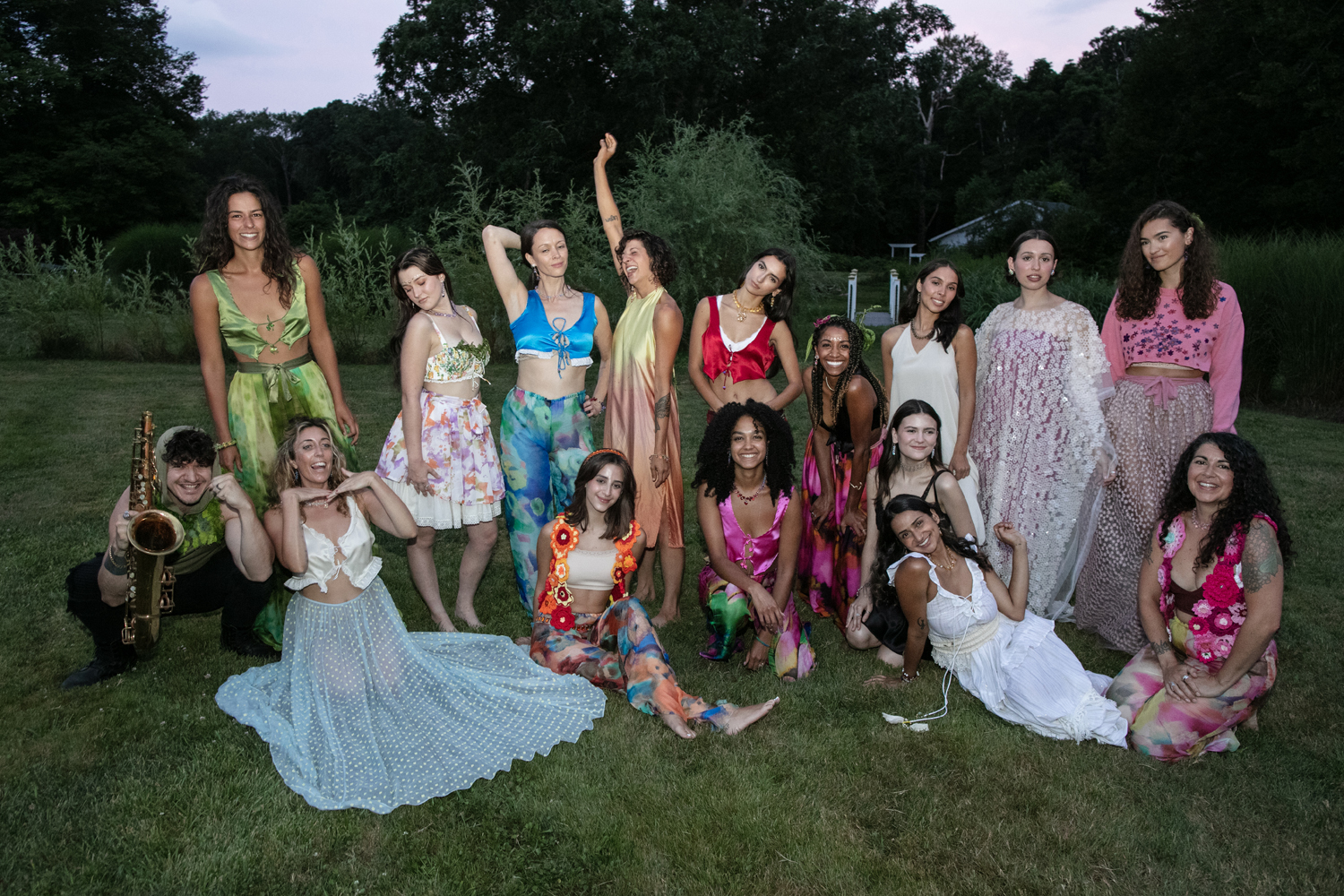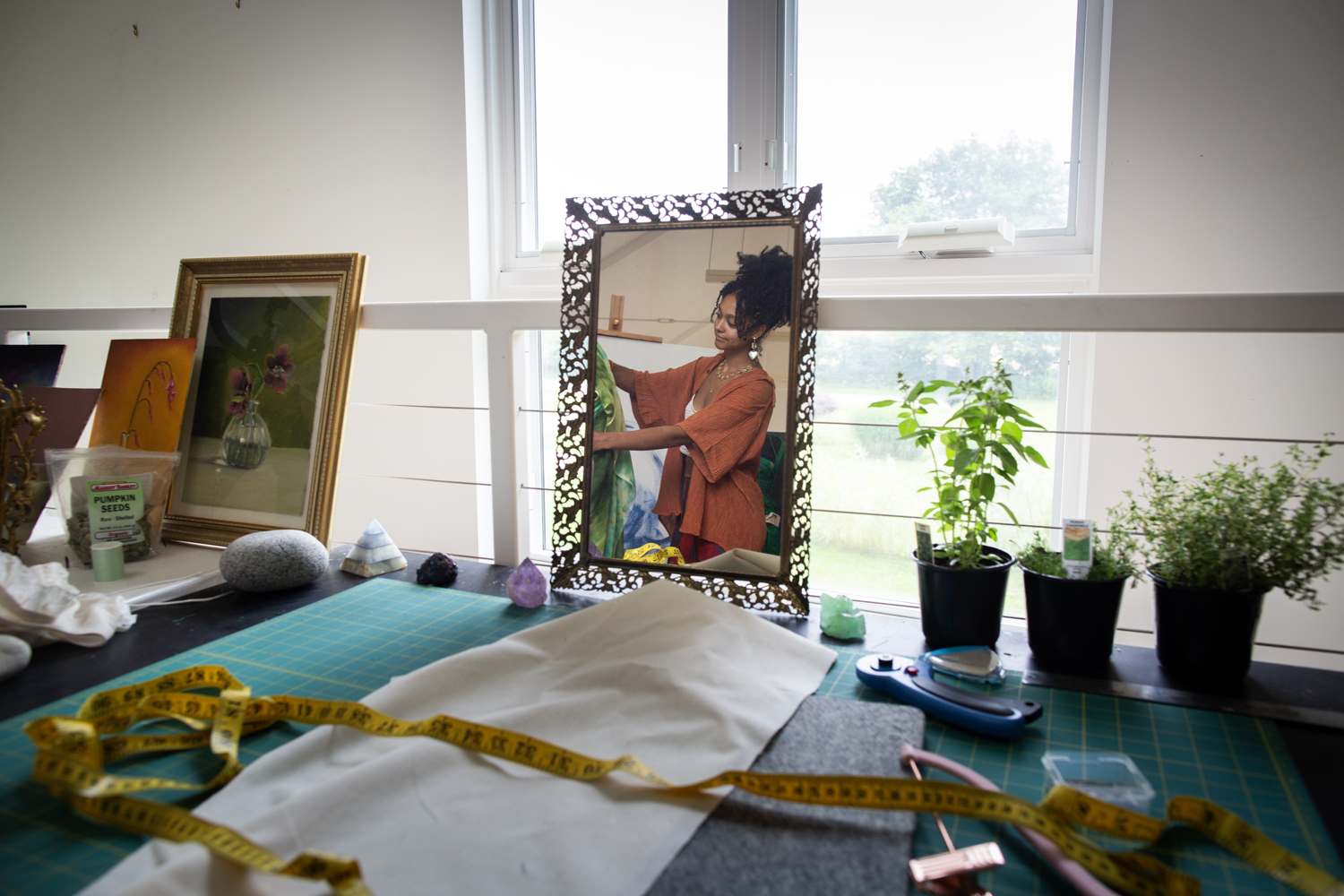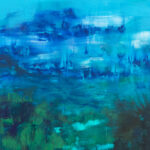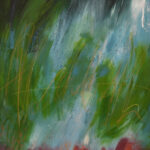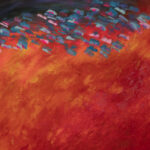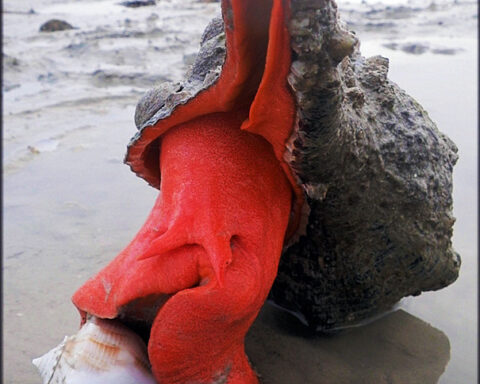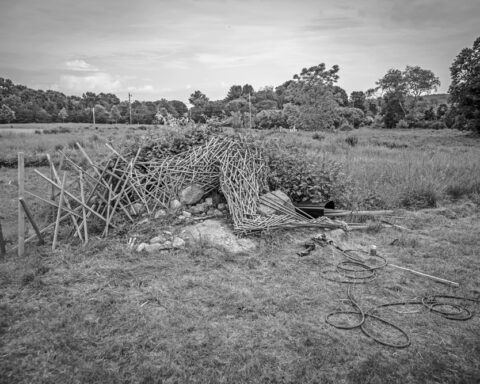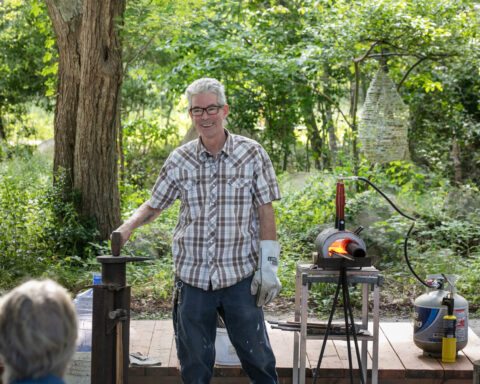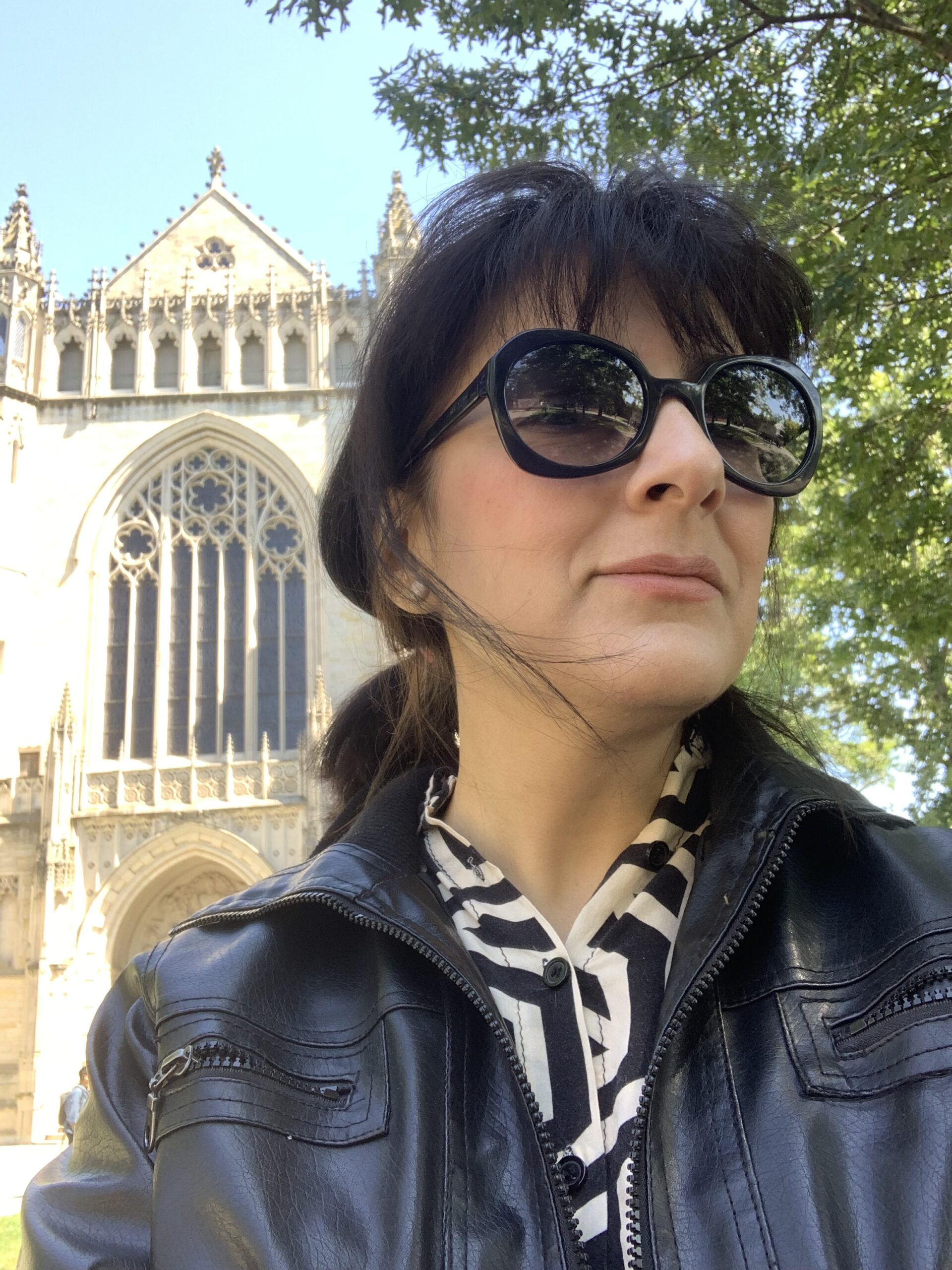Colors in Motion: Abstracts and Flowing Fashion from Nature showcases Aimée Charlesworth, a fashion designer and painter from England. Her work features vibrant abstract and still-life paintings inspired by the natural world.
Filmed by Mark Walker
Merri Cyr Interviews Artist Aimée Charlesworth
Merri Cyr: Can you tell me a little bit of your history and background?
Aimée Charlesworth: I studied fashion and art design in Nottingham, England. It was an amazing course and I really loved it. It was the first time I was learning something I really felt enthusiastic and passionate about. At the time I got really into haute couture and designing dresses. People were asking me to make dresses for them for their different events. It was going really well but finally I decided that I wanted to go more into the model side of things and actually wear the clothing and go to runways. That was really fun and it was a different segway into the fashion world. I got a good look at it from the inside. I was always making and customizing my own clothes, and very passionate about the environment which was why I didn’t really feel such a pull towards working in fashion. I could see that it had this really gross side to it that made me feel quite uneasy. Fast forward a few years, I started to work with companies that were sustainable, and it rekindled my idea and insight into how the fashion world doesn’t have to be following the same route that other companies are. I’m interested in sustainability. I was working on branding at a company called Adorned, which was a small business run by a mother and daughter team. I learned a lot more about who makes the clothes and the how. I did a lot of modeling for them as well. It kind of opened me up to understand that there are people that are doing things in a different way.
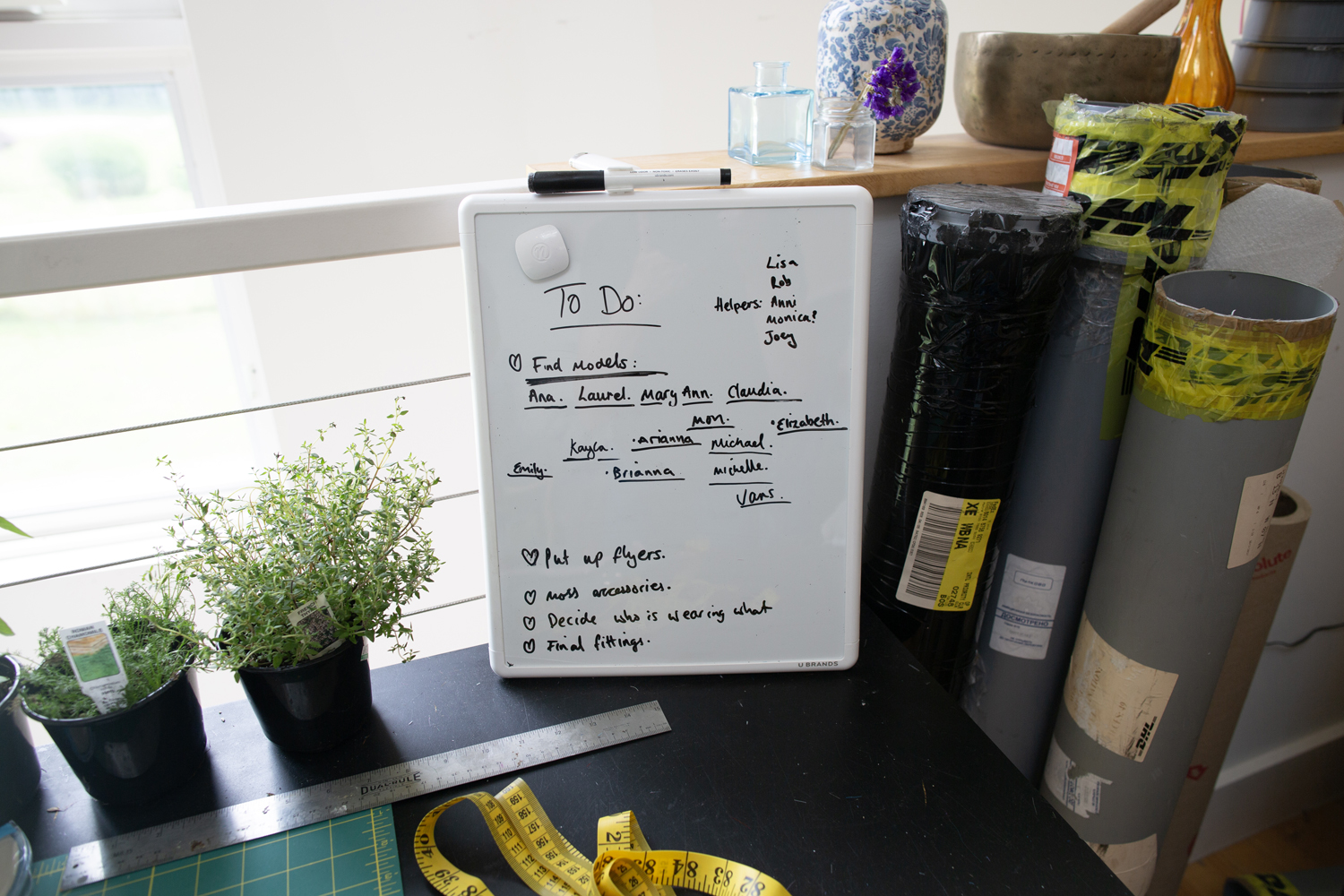
MC: What initially made you interested in modeling and what did you feel like you could do with that?
AC: I could see that the world of modeling is really, really influential. I thought that by being a person of influence in what I wear and the way that I carry myself in the world could be a good way of being a help. When modeling for a company called Adorned, I was more interested in helping them with their branding and social media marketing. A lot of the brands that I was modeling for were kind of smaller bespoke brands, so it was in their nature to be more sustainable.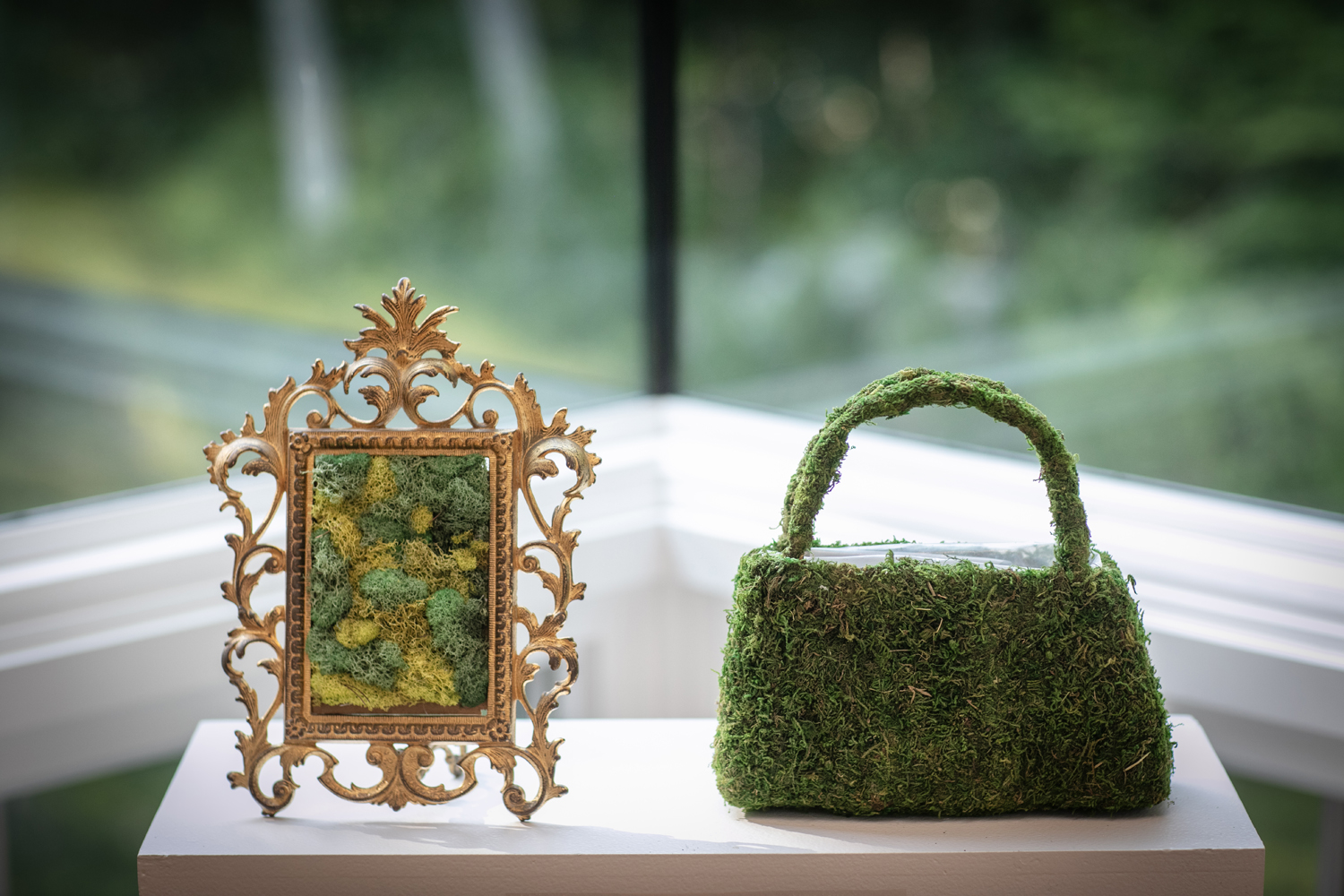 At the beginning of my modeling career, it was more of a social thing, like learning to be kind to one another. That was really important to me, being a person of influence in that respect. It was about being a good influence and positive in the way that I talk about the world and not being so artificial. I was working with loads of different photographers and going to events. I was speaking my truth about what I think is important and also becoming at peace with my hair and the fact that I’m a person of color. That was something that was quite new for me. Being in the UK, there wasn’t very much diversity in the modeling world that I could see. It was a lot of self healing and being there for other people as well. I did find that is something that people felt comfortable to speak to me about and feel inspired by. So that was cool, right? Social media platforms are used to communicate with people and find people that are having a similar experience. And also also to see that someone who looks like me can do things.
At the beginning of my modeling career, it was more of a social thing, like learning to be kind to one another. That was really important to me, being a person of influence in that respect. It was about being a good influence and positive in the way that I talk about the world and not being so artificial. I was working with loads of different photographers and going to events. I was speaking my truth about what I think is important and also becoming at peace with my hair and the fact that I’m a person of color. That was something that was quite new for me. Being in the UK, there wasn’t very much diversity in the modeling world that I could see. It was a lot of self healing and being there for other people as well. I did find that is something that people felt comfortable to speak to me about and feel inspired by. So that was cool, right? Social media platforms are used to communicate with people and find people that are having a similar experience. And also also to see that someone who looks like me can do things. 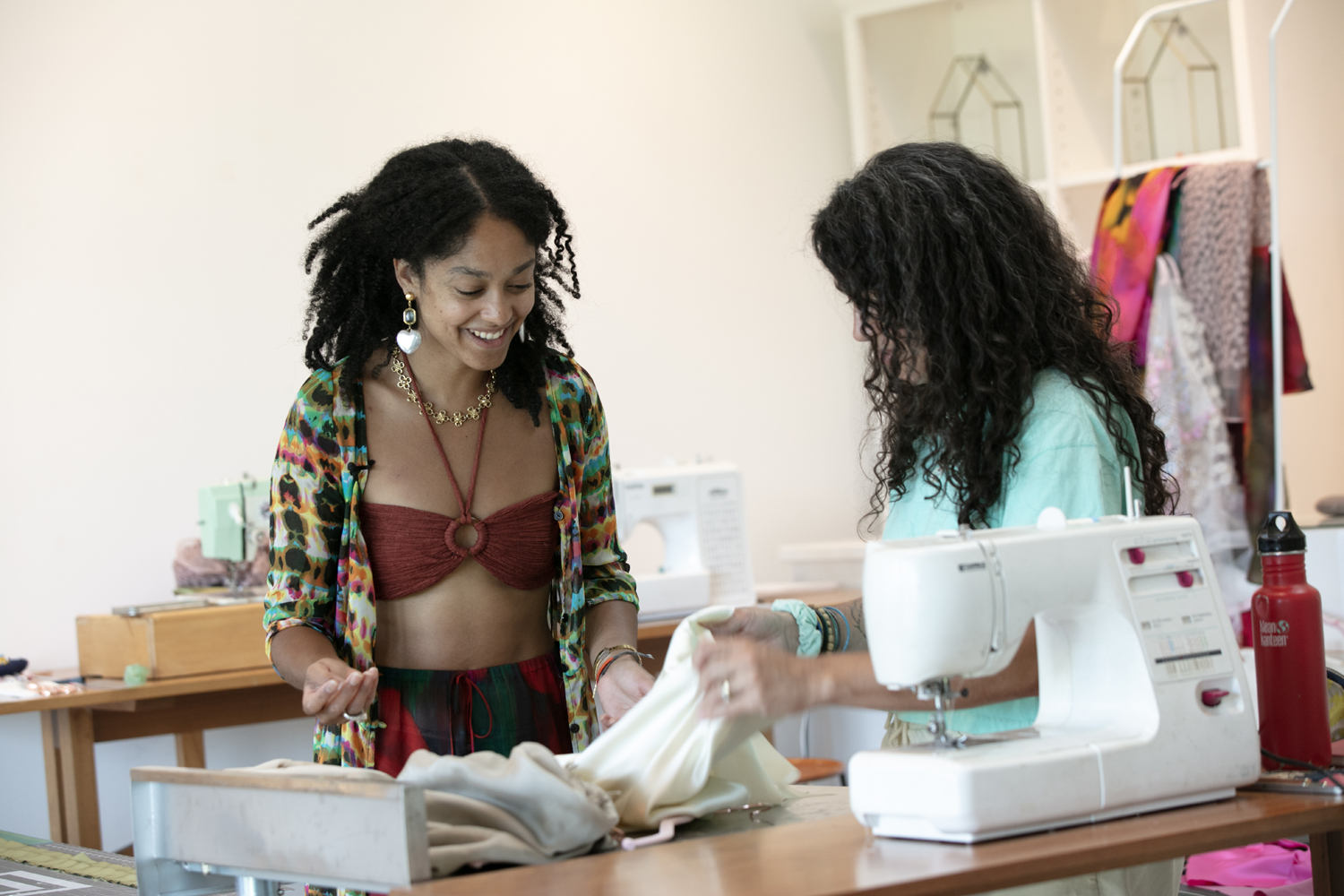
MC: Do you feel like that is still true?
AC: I think we’ve seen it’s really changed quite recently. When I was modeling, it was pretty rare to see a person with curly hair like mine, and I just felt quite alienated a lot of the time. I was trying to change myself to look like what I thought was beautiful because of what I’d see. I would straighten my hair and even the makeup I would wear would be I was just trying to fit into this ideal. Over the years, seeing the diversity makes you feel really comfortable.
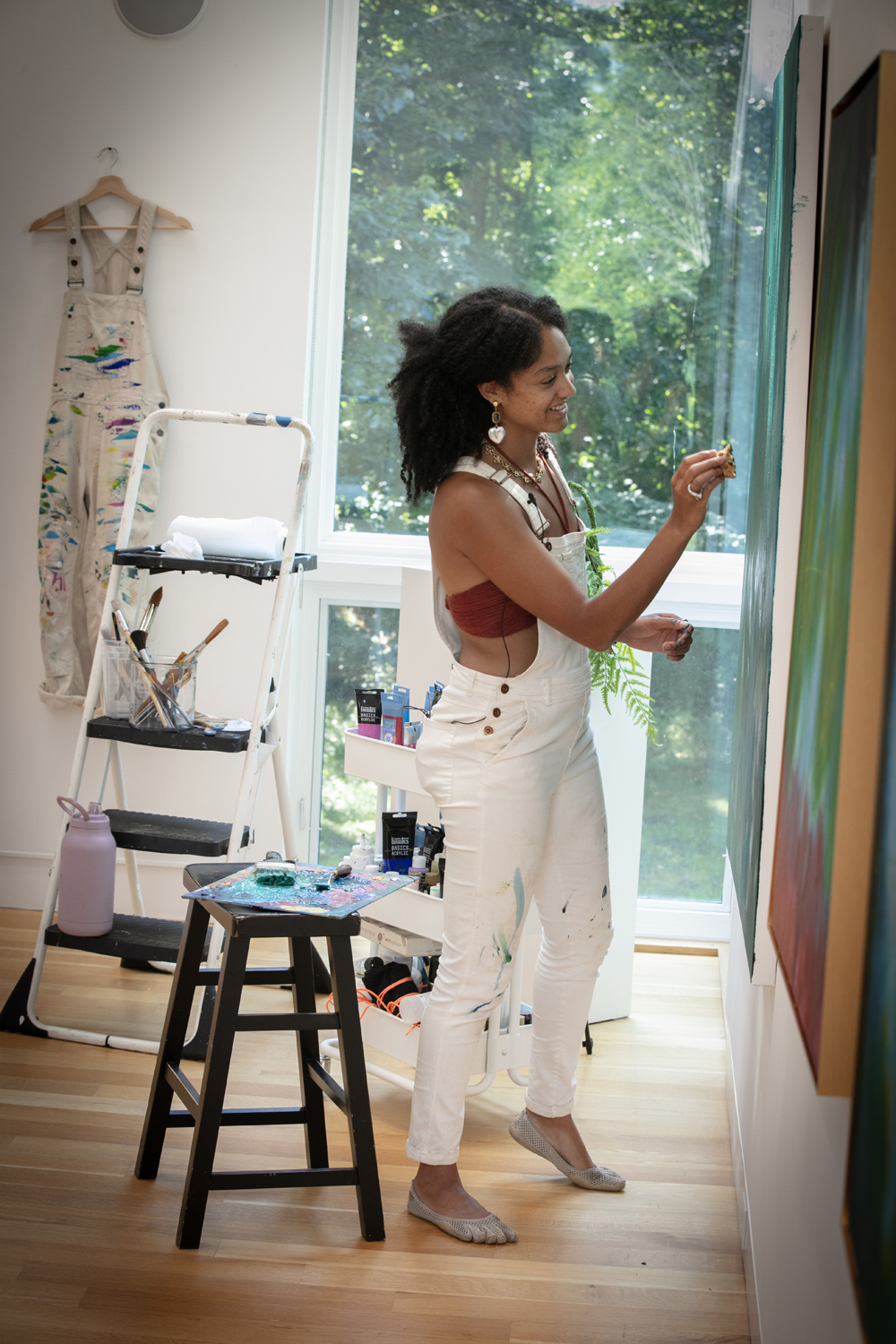
MC: Did working in social media make you feel more confident?
AC: I feel more comfortable in myself, obviously, but it helps to see it as a kind of self-expression and just accepting yourself as you are. The more you do that, the easier it gets.
MC: What are the most poignant interactions you’ve had with your audience?
AC: That’s a good question. I found myself having a lot of followers that were of similar skin color and and ethnicity as me, and they were often saying to me that they had never really felt comfortable in themselves and seeing me really embracing the way that I look naturally made them feel like they could do that too. And I could see it.
It was it was really sweet, like seeing all of these women that were starting to learn about themselves and feeling more comfortable in themselves. It’s a really huge thing for you, for your mental health and wellbeing. In television now a lot of different perspectives or people from totally different environments are getting covered in a way that they never were before.
MC: What you feel like the media is reflecting back to you now?
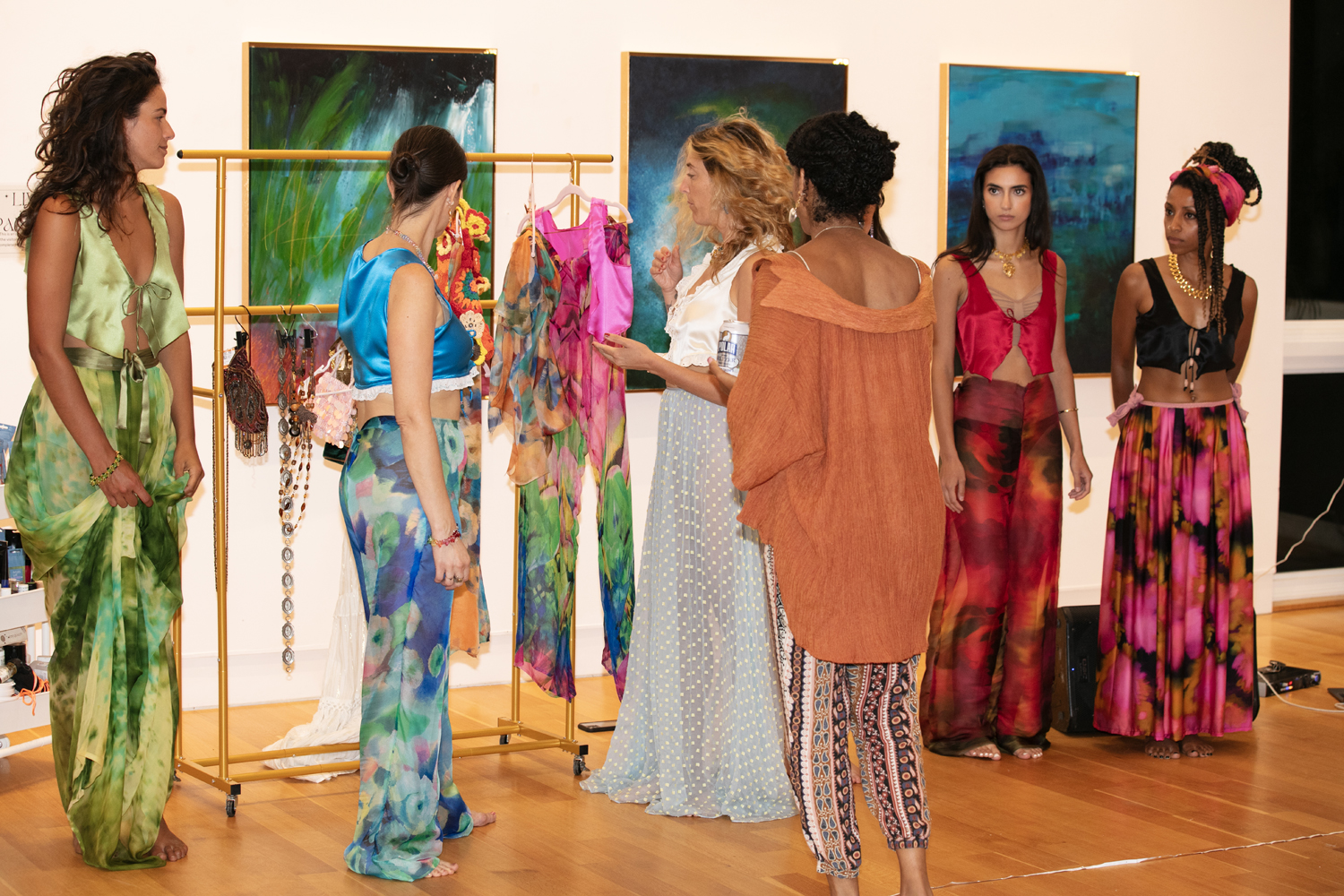
AC: I feel like here is quite different from the UK and culturally it’s very different. What I see from being here in America is a representation of so many different types of people. America is the melting pot of the world. And it does feel like that, especially living in New Bedford. I look at runway shows and there’s not just one brown model. There’s several of them. I see these high fashion brands and they have beautiful women of color holding their handbags. I didn’t really see that before at all. For example opening one of my favorite magazines, Vogue . I remember as a kid flicking through them and it was always these Caucasian women, beautiful, but I would very rarely see women that look like me.
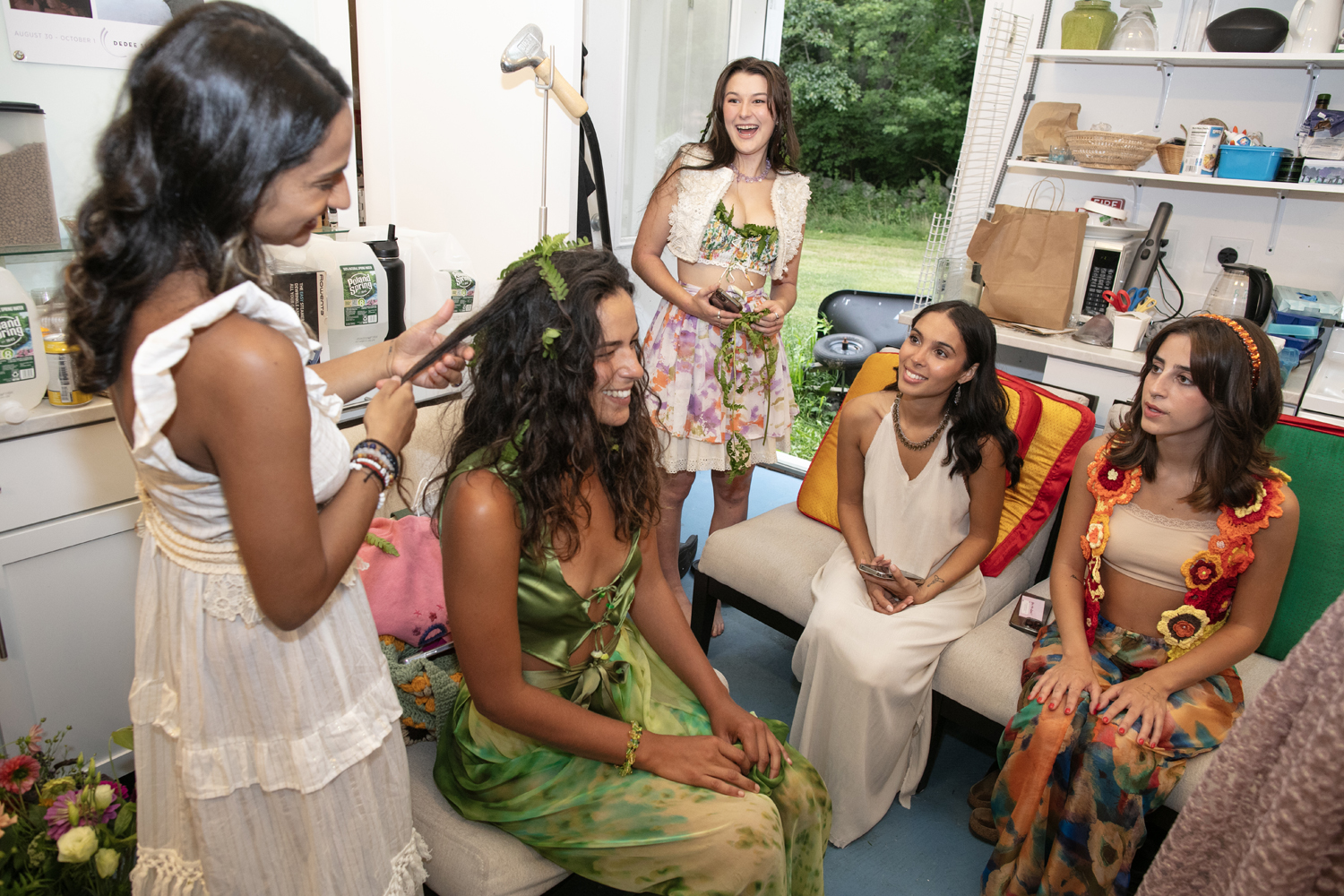
MC: Is there a relationship between the paintings and the fashion work that you do?
AC: When I look at the world, I’m looking at the colors very specifically, and that’s what comes out in my art. I think I feel happiest being around color. My art and fashion have become very playful and fun and vibrant. What you wear and what you’re surrounded by affects how you feel. My plan is to begin to paint onto fabric and make it into dresses. So I’m kind of working out how I can do that.
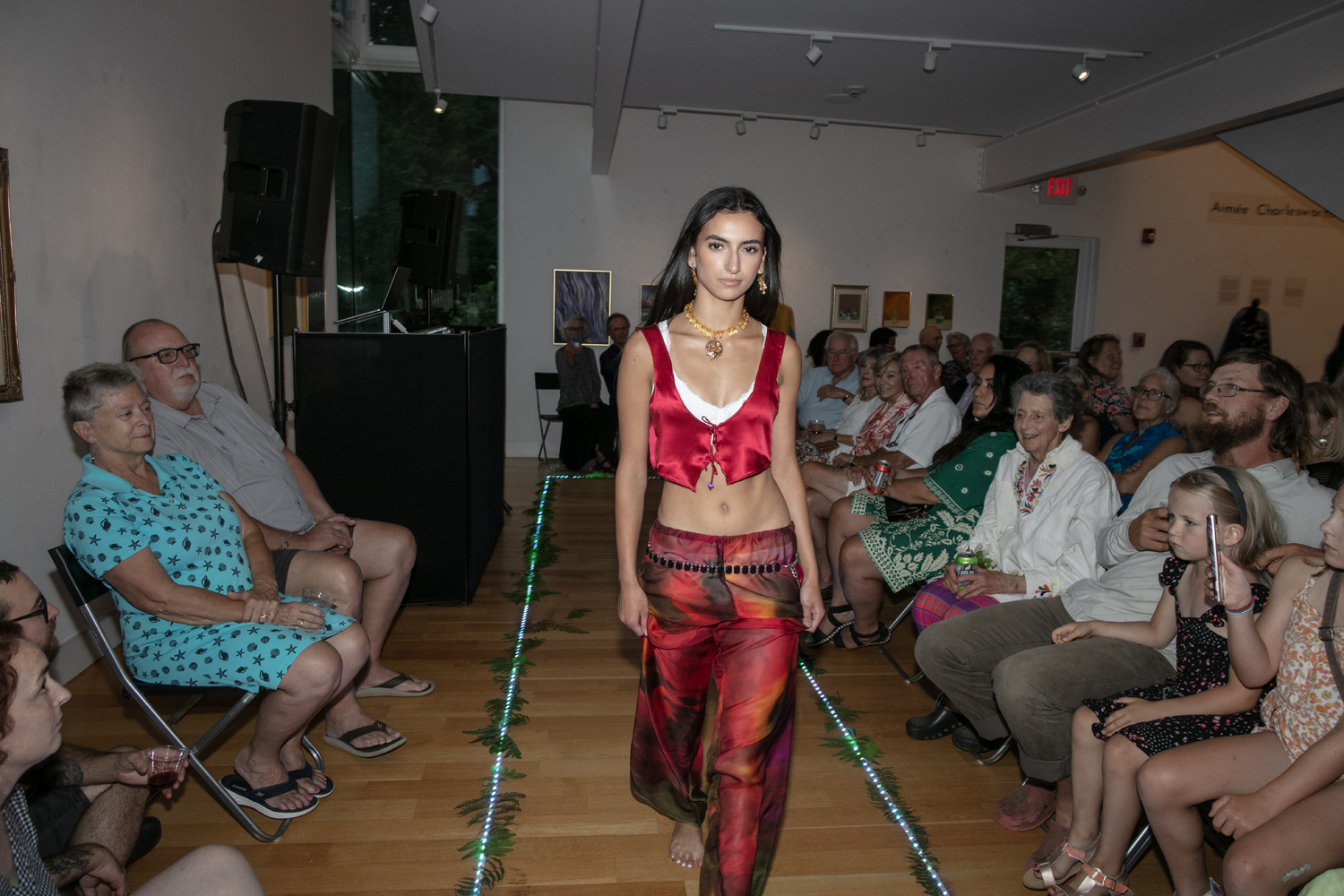
MC: Can you tell me about the Fashion Show at the Dedee Shattuck Gallery on August 5th?
AC: For the catwalk, a lot of pieces that I presented were up cycled and reworked. There were a lot of handmade, bespoke pieces made out of crochet, silk, and all natural fibers. A lot of antique pieces were reworked into new pieces. The idea is sustainability, floaty and feminine pieces, along with live music by my husband who plays saxaphone.
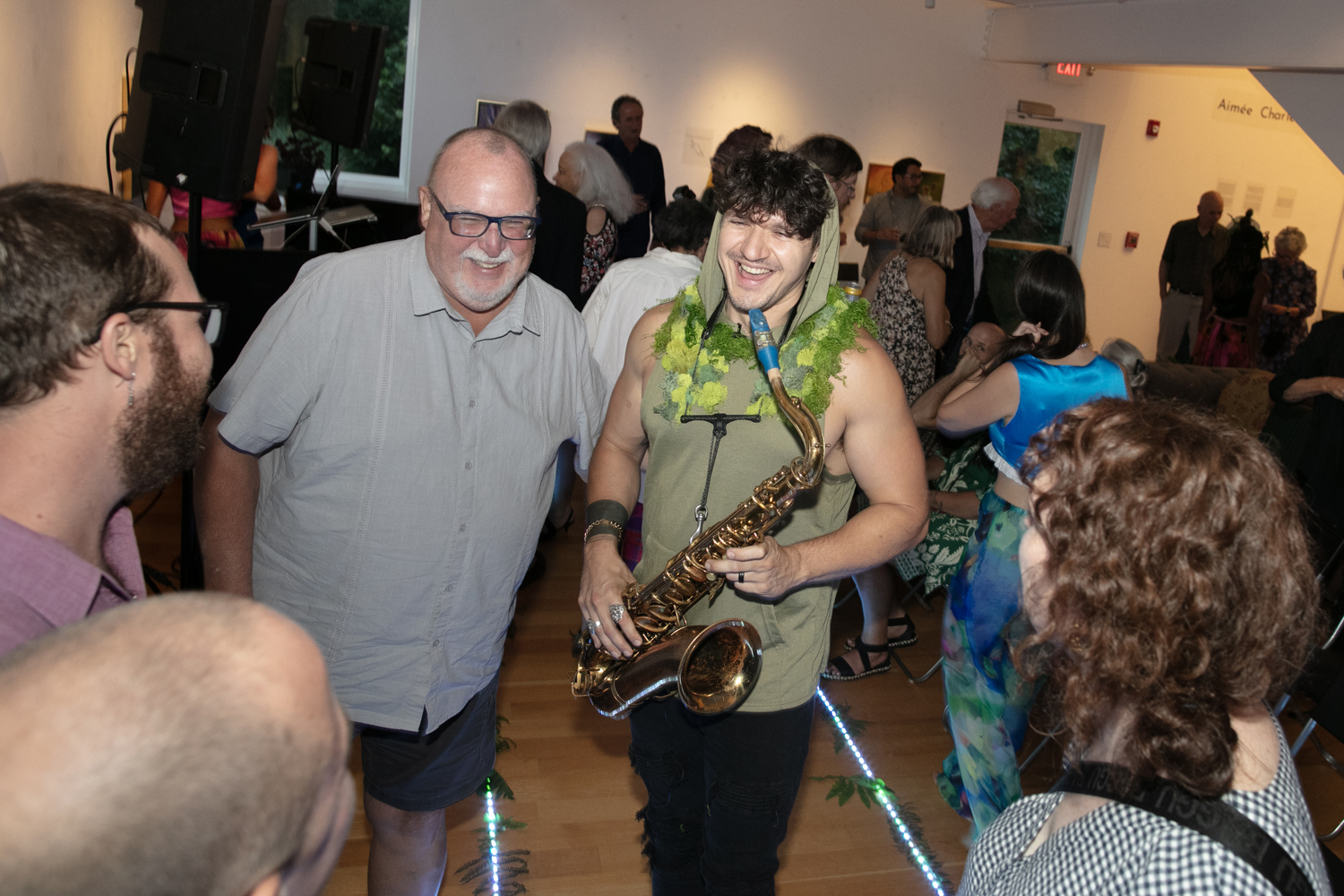
MC: Can you tell me a little about your process?
AC: My process is having a few days of painting and then going into a few days of making clothes. I do find that when I’m working, I do go into a bit of a trance, especially when I’m painting. So I really need to have quite a bit of time to be able to be in that space. Not much of a multi-tasker. I like to really focus on what I’m doing one thing at a time.
MC: What materials do you work with?
AC: There is a lot of silk, which is extremely slippery. It’s been a very interesting process to work with it and the other fabrics are all natural fibers. There is crochet that is made of alpaca and wool Cotton, some cashmere and yarn that’s used as well. My husband’s mum is actually helping me do those crochet pieces because, I mean, I only have two hands and so much to do. For the most part it’s silk, cotton and wool.
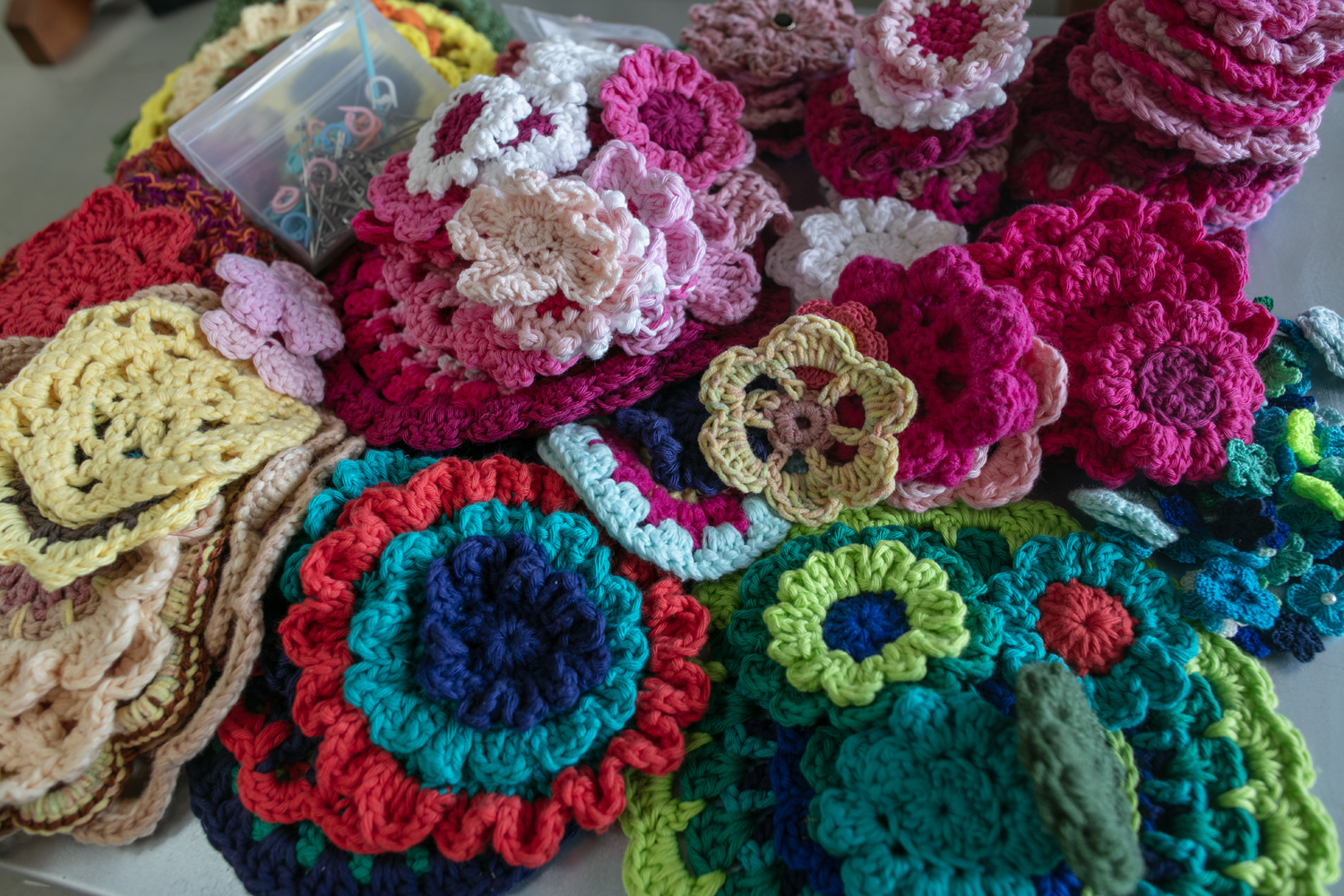
MC: Are you able to source anything locally?
Yeah, the antique pieces that I have are locally sourced from a lady called Amy at Amy’s Fabric Treasures. She does consignment. The crochet is being handmade by a local lady, and some of the fabrics are going to be hand-dyed with natural dyes as well. So that’s local as well. Also, there is an incredible woman named Claudia. She has a store in Kilburn Mills in New Bedford called the The Bushwood Tailors Opportunity Shop.
MC: So your work is a bit of a collaboration?
AC: Yes. Oh, and also one thing that I forgot to mention that’s really odd, but cool. I’ve been getting locals to collect bag ties for me, which we don’t have in the UK.
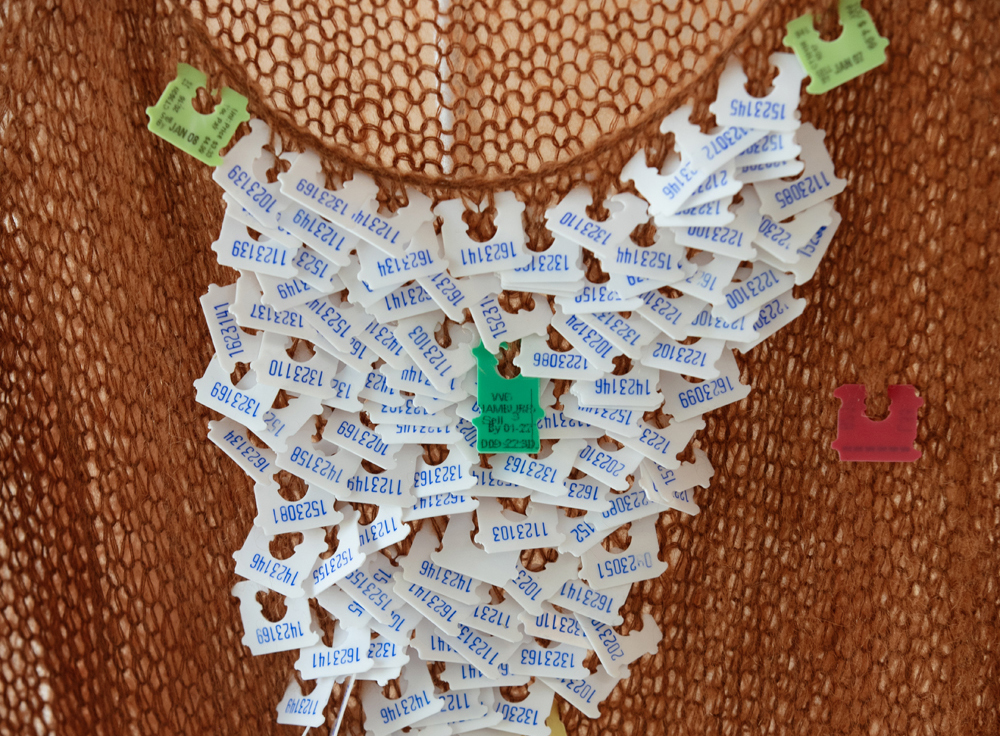 Since I’ve been here I’ve been obsessed with them. You know, the little plastic square ones. These are really unnecessary plastic, just to be ripped off and thrown away. I have thousands of them and they’re going to be part of a sweater that’s going to be covered in them. It’s going to have a very interesting sound as it’s walking through the catwalk.
Since I’ve been here I’ve been obsessed with them. You know, the little plastic square ones. These are really unnecessary plastic, just to be ripped off and thrown away. I have thousands of them and they’re going to be part of a sweater that’s going to be covered in them. It’s going to have a very interesting sound as it’s walking through the catwalk.
MC: Are there any artists who inspired you?
AC: There was a trip that we took to see an Alexander McQueen exhibit. It was astounding. Absolutely. Just the most beautiful pieces I’d ever seen. I was absolutely in awe. And that that was really a moment of, wow, this is just incredible that someone can create such beautiful work that lived not that far away from me, who had an upbringing that was hard and where they didn’t have much money and still were able to create this art and become this incredible brand. It really inspired me to think that I don’t have to think small. I could do anything. I love that. Yeah. So that’s wonderful.
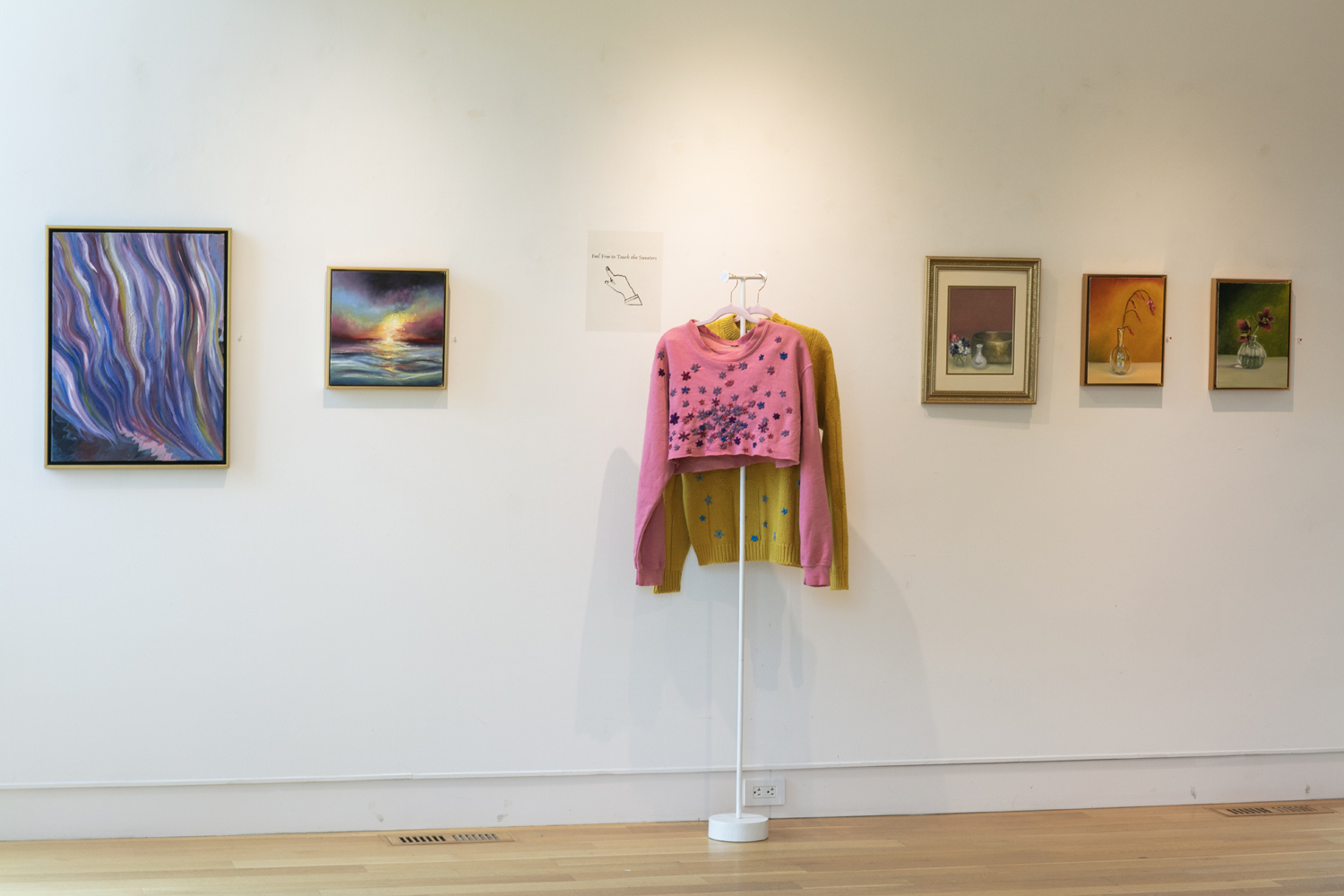 MC: Are you a perfectionist?
MC: Are you a perfectionist?
AC: Yeah, maybe a little bit. But I try to be comfortable in the imperfection as well. I am learning that as I’m getting older.
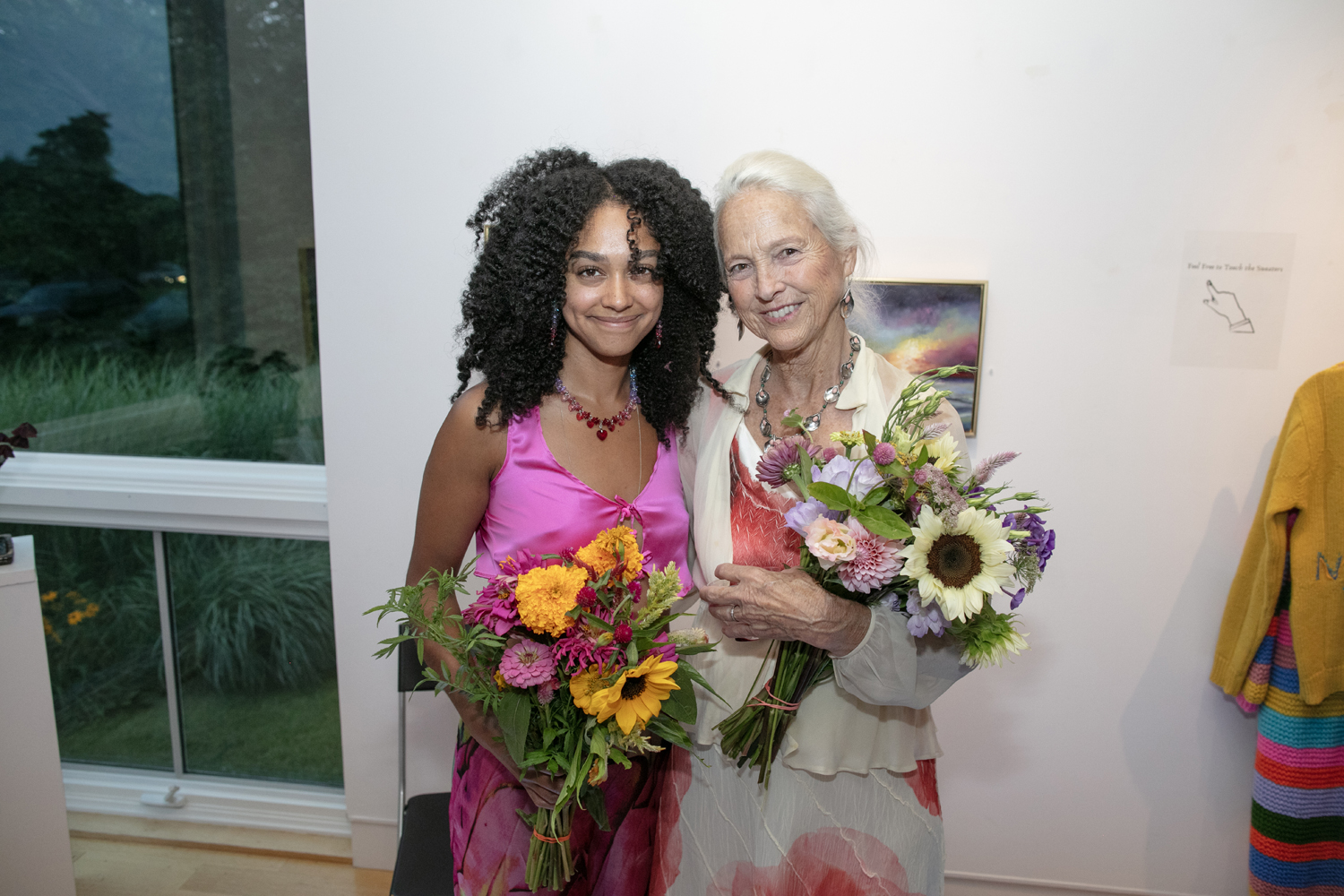
MC: Do you ever feel satisfied with what you’ve created?
AC: I am becoming more able to feel satisfied with my work and be able to say, “Oh, okay, this is done.” But there’s a part of me feels like I have to do more. I think having outside perspectives has been really helpful for me when I can see others reactions.
Being an artist is a way of life, like the way that you put detail and care into things or intention into something, into the placement or how something feels in a space, even how you move through a space. That’s living artistically.
